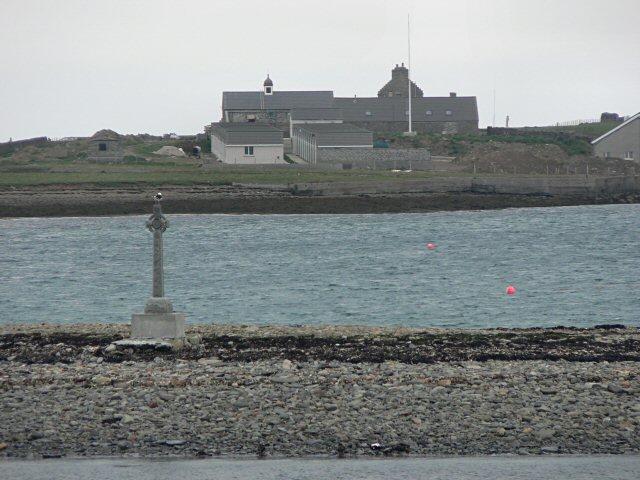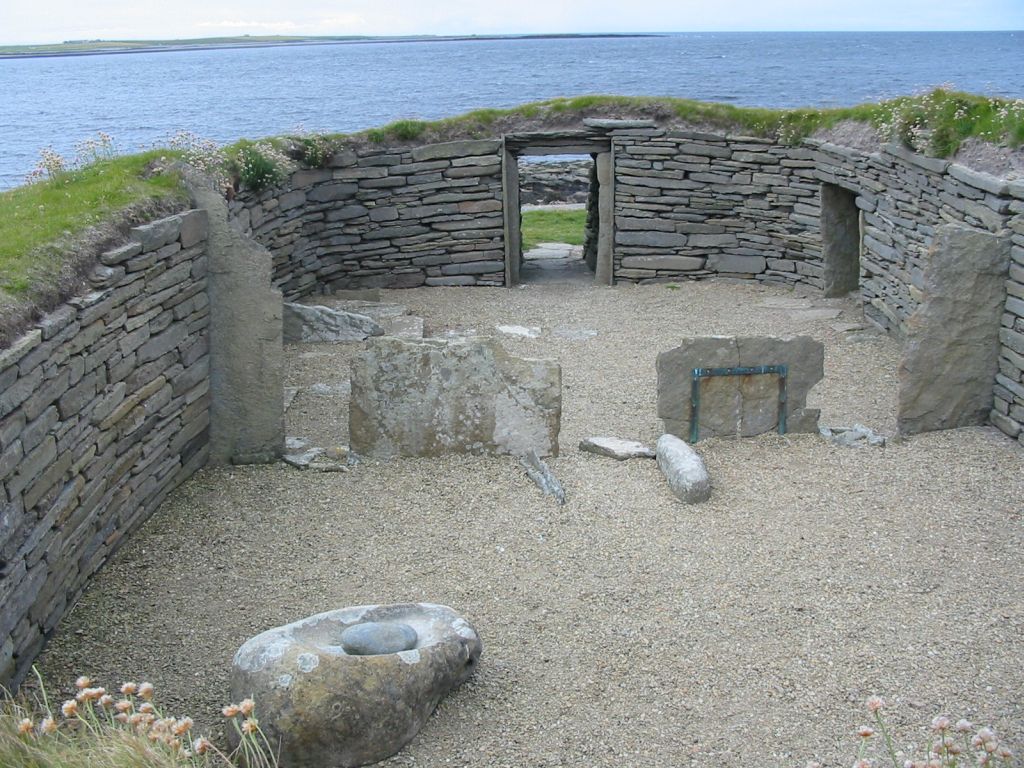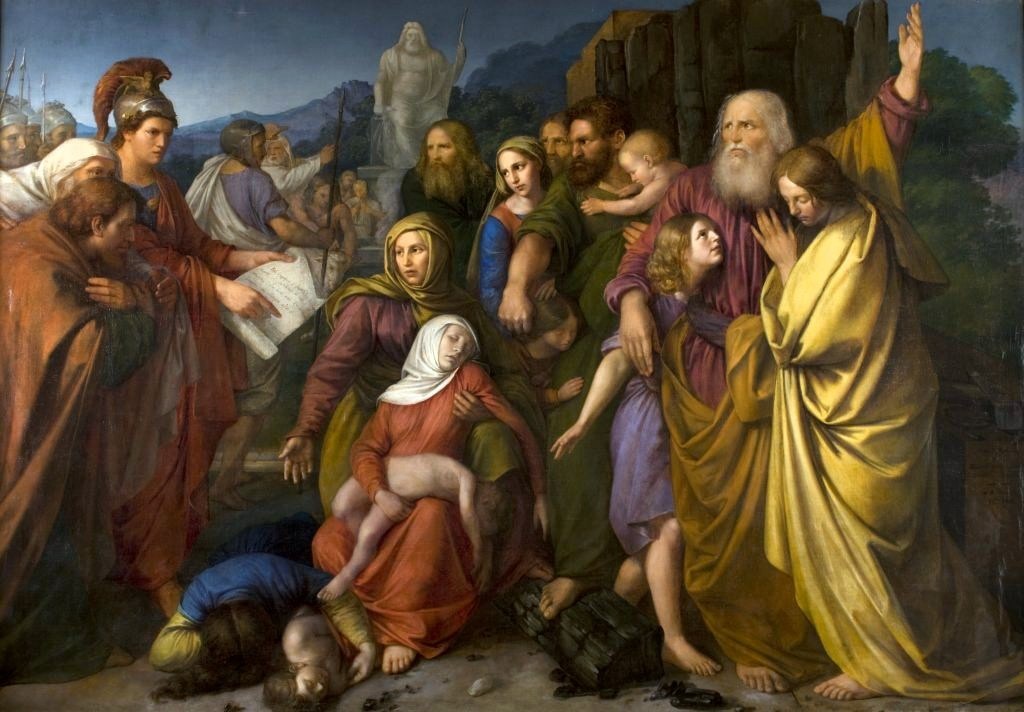|
Papar
The Papar (; from Latin ''papa'', via Old Irish, meaning "father" or "pope") were, according to early Icelandic sagas, Irish monks who took eremitic residence in parts of what is now Iceland before that island's habitation by the Norsemen of Scandinavia, as evidenced by the sagas and recent archaeological findings. Origins The first Norsemen began settling in Iceland in 874 CE. The oldest Scandinavian source mentioning the existence of the Papar, however, the ''Íslendingabók'' ("Book of the Icelanders") by Icelandic chronicler Ari Þorgilsson, was written between 1122 and 1133, some time after the event. Ari writes of "Christian men", titled the 'Papar' by the Norsemen, who departed the isle because of their dislike of the 'heathen' Norse, pointing to the possibility of the Papar having arrived before the Norse. An earlier source that could possibly refer to the Papar is the work of Dicuil, an early 9th-century Irish monk and geographer, which included mention of the w ... [...More Info...] [...Related Items...] OR: [Wikipedia] [Google] [Baidu] |
Papey
Papey () is an island near the east coast of Iceland in the municipality Djúpavogshreppur and is about in extent, the highest point on the island being about above sea level. The island was inhabited from the settlement of Iceland until 1966. There still is a lighthouse, a dwelling house, a church and a weather station on the island, the latter automated since 1998. There are also large colonies of Atlantic puffins on the island. Papey is said to be named after the monks called Papar and it is mentioned in the Landnámabók as one of two places where these monks lived. The story in Landnámabók is that as Ingólfr Arnarson and his followers had lived during the winter at Geithellar in Álftafjörður at a distance from Papey, some of his women followers climbed a mountain in the spring and saw smoke from the island. When they later got a closer look and found special items there, they understood that the smoke had to have been from Papar (or quote: "Vestmen") inhabit ... [...More Info...] [...Related Items...] OR: [Wikipedia] [Google] [Baidu] |
Iceland
Iceland ( is, Ísland; ) is a Nordic island country in the North Atlantic Ocean and in the Arctic Ocean. Iceland is the most sparsely populated country in Europe. Iceland's capital and largest city is Reykjavík, which (along with its surrounding areas) is home to over 65% of the population. Iceland is the biggest part of the Mid-Atlantic Ridge that rises above sea level, and its central volcanic plateau is erupting almost constantly. The interior consists of a plateau characterised by sand and lava fields, mountains, and glaciers, and many glacial rivers flow to the sea through the lowlands. Iceland is warmed by the Gulf Stream and has a temperate climate, despite a high latitude just outside the Arctic Circle. Its high latitude and marine influence keep summers chilly, and most of its islands have a polar climate. According to the ancient manuscript , the settlement of Iceland began in 874 AD when the Norwegian chieftain Ingólfr Arnarson became the first ... [...More Info...] [...Related Items...] OR: [Wikipedia] [Google] [Baidu] |
Norse–Gaels
The Norse–Gaels ( sga, Gall-Goídil; ga, Gall-Ghaeil; gd, Gall-Ghàidheil, 'foreigner-Gaels') were a people of mixed Gaelic and Norse ancestry and culture. They emerged in the Viking Age, when Vikings who settled in Ireland and in Scotland became Gaelicised and intermarried with Gaels. The Norse–Gaels dominated much of the Irish Sea and Scottish Sea regions from the 9th to 12th centuries. They founded the Kingdom of the Isles (which included the Hebrides and the Isle of Man), the Kingdom of Dublin, the Lordship of Galloway (which is named after them), and briefly (939–944 AD) ruled the Kingdom of York. The most powerful Norse–Gaelic dynasty were the Uí Ímair or House of Ivar. Over time, the Norse–Gaels became ever more Gaelicised and disappeared as a distinct group. However, they left a lasting influence, especially in the Isle of Man and Outer Hebrides, where most placenames are of Norse–Gaelic origin. Several Scottish clans have Norse–Gaelic roots, such as ... [...More Info...] [...Related Items...] OR: [Wikipedia] [Google] [Baidu] |
Latin
Latin (, or , ) is a classical language belonging to the Italic branch of the Indo-European languages. Latin was originally a dialect spoken in the lower Tiber area (then known as Latium) around present-day Rome, but through the power of the Roman Republic it became the dominant language in the Italian region and subsequently throughout the Roman Empire. Even after the fall of Western Rome, Latin remained the common language of international communication, science, scholarship and academia in Europe until well into the 18th century, when other regional vernaculars (including its own descendants, the Romance languages) supplanted it in common academic and political usage, and it eventually became a dead language in the modern linguistic definition. Latin is a highly inflected language, with three distinct genders (masculine, feminine, and neuter), six or seven noun cases (nominative, accusative, genitive, dative, ablative, and vocative), five declensions, four ... [...More Info...] [...Related Items...] OR: [Wikipedia] [Google] [Baidu] |
Crosier
A crosier or crozier (also known as a paterissa, pastoral staff, or bishop's staff) is a stylized staff that is a symbol of the governing office of a bishop or abbot and is carried by high-ranking prelates of Roman Catholic, Eastern Catholic, Eastern Orthodox, Oriental Orthodox, and some Anglican, Lutheran, United Methodist and Pentecostal churches. In Western Christianity the usual form has been a shepherd's crook, curved at the top to enable animals to be hooked. In Eastern Christianity, it is found in two common forms: tau-shaped, with curved arms, surmounted by a small cross; or a pair of sculptured serpents or dragons curled back to face each other, with a small cross between them. Other typical insignia of prelates are the mitre, the pectoral cross, and the episcopal ring. History The origin of the crozier as a staff of authority is uncertain, but there were many secular and religious precedents in the ancient world. One example is the lituus, the traditio ... [...More Info...] [...Related Items...] OR: [Wikipedia] [Google] [Baidu] |
John Of Fordun
John of Fordun (before 1360 – c. 1384) was a Scottish chronicler. It is generally stated that he was born at Fordoun, Mearns. It is certain that he was a secular priest, and that he composed his history in the latter part of the 14th century. It is probable that he was a chaplain in St Machar's Cathedral of Aberdeen.William Ferguson, ''The identity of the Scottish nation: an historic quest,'' Edinburgh University Press, 1998, The work of Fordun is the earliest attempt to write a continuous history of Scotland. Fordun undertook this task because his patriotic zeal was roused by the removal or destruction of many national records by Edward III of England. He travelled across England and Ireland, collecting material for his history. Collectively, this work, divided into five books, is known as the '' Chronica Gentis Scotorum.'' The first three are unverified historically, which therefore casts doubt on their accuracy. Yet they also form the groundwork on which Boec ... [...More Info...] [...Related Items...] OR: [Wikipedia] [Google] [Baidu] |
Papa Stronsay
Papa Stronsay ( sco, Papa Stronsee; non, Papey Minni) is a small island in Orkney, Scotland, lying north east of Stronsay. It is in size, and above sea level at its highest point. After being largely abandoned, the island was bought at the end of the 20th century by traditionalist Catholic monks of the Sons of the Most Holy Redeemer, who operate a monastery and farm there. According to folklore, some of the natives were descended from a female selkie. This was because they had horny skin on their feet and hands, and permanently smelt of fish. Geography and geology The geology is middle old red sandstone. A thin tongue of land curls west from the main part of the island, and then south to form the Point of the Graand (a local word meaning a "sandbar"). The island in general is low lying, reaching a mere at its highest point. There is an light beacon in the north east. History The island has remains of two chapels. One dates from the eleventh century, and an eighth-century ... [...More Info...] [...Related Items...] OR: [Wikipedia] [Google] [Baidu] |
Papa Westray
Papa Westray () ( sco, Papa Westree), also known as Papay, is one of the Orkney Islands in Scotland, United Kingdom. The fertile soilKeay, J. & Keay, J. (1994) ''Collins Encyclopaedia of Scotland''. London. HarperCollins. has long been a draw to the island. Attractions on the island include Holland House with an associated folk museum and the Knap of Howar Neolithic farmstead run by Historic Scotland. It is the ninth largest of the Orkney Islands with an area of . The island's population was 90 as recorded by the 2011 census, an increase of over 35% since 2001 when there were only 65 usual residents. During the same period, Scottish island populations as a whole grew by 4% to 103,702. Infrastructure Orkney Ferries sail from Papa Westray to Pierowall's Gill Pier. Twice a week - on Tuesday and Friday - the or provides a direct service to and from Kirkwall on the Orkney Mainland, also serving either Rapness on Westray, or North Ronaldsay. There are also occasional summer ... [...More Info...] [...Related Items...] OR: [Wikipedia] [Google] [Baidu] |
Judaism
Judaism ( he, ''Yahăḏūṯ'') is an Abrahamic, monotheistic, and ethnic religion comprising the collective religious, cultural, and legal tradition and civilization of the Jewish people. It has its roots as an organized religion in the Middle East during the Bronze Age. Modern Judaism evolved from Yahwism, the religion of ancient Israel and Judah, by the late 6th century BCE, and is thus considered to be one of the oldest monotheistic religions. Judaism is considered by religious Jews to be the expression of the covenant that God established with the Israelites, their ancestors. It encompasses a wide body of texts, practices, theological positions, and forms of organization. The Torah, as it is commonly understood by Jews, is part of the larger text known as the ''Tanakh''. The ''Tanakh'' is also known to secular scholars of religion as the Hebrew Bible, and to Christians as the "Old Testament". The Torah's supplemental oral tradition is represented by later tex ... [...More Info...] [...Related Items...] OR: [Wikipedia] [Google] [Baidu] |
Picts
The Picts were a group of peoples who lived in what is now northern and eastern Scotland (north of the Firth of Forth) during Late Antiquity and the Early Middle Ages. Where they lived and what their culture was like can be inferred from early medieval texts and Pictish stones. Their Latin name, , appears in written records from the 3rd to the 10th century. Early medieval sources report the existence of a distinct Pictish language, which today is believed to have been an Insular Celtic language, closely related to the Brittonic spoken by the Britons who lived to the south. Picts are assumed to have been the descendants of the Caledonii and other Iron Age tribes that were mentioned by Roman historians or on the world map of Ptolemy. The Pictish kingdom, often called Pictland in modern sources, achieved a large degree of political unity in the late 7th and early 8th centuries through the expanding kingdom of Fortriu, the Iron Age Verturiones. By the year 900, the result ... [...More Info...] [...Related Items...] OR: [Wikipedia] [Google] [Baidu] |
Historia Norwegiæ
''Historia Norwegiæ'' is a short history of Norway written in Latin by an anonymous monk. The only extant manuscript is in the private possession of the Earl of Dalhousie, and is now kept in the National Records of Scotland in Edinburgh. The manuscript contains several other texts; the ''Historia'' itself is in folios 1r-12r. Recent dating efforts place it somewhere c. 1500-1510A. The original text was written several centuries earlier than the manuscript itself; the text refers to both a volcanic eruption and an earthquake in 1211 as contemporary events, and Orkney is stated to be under Norwegian rule. Contents ''Historia Norwegiæ'' consists of three parts: * I. A short geographical survey of Norway and its dominions, followed by a brief history of Norway * II. Genealogy of the Earls of Orkney * III. Catalogue of the Kings of Norway Notable One of ''Historia Norwegiæ'''s important features is a Latin translation of an independent version of Þjóðólfr of Hvinir's ska ... [...More Info...] [...Related Items...] OR: [Wikipedia] [Google] [Baidu] |
Grímur Kamban
Grímr Kamban was, according to the ''Færeyinga saga'', the first Norse settler in the Faroe Islands. The modern Faroese form of the name is ''Grímur'', but it was ''Grímr'' in Old Norse and is often anglicised as ''Grim''. Settlement of the Faroe Islands The saga says he was a Norwegian Viking escaping the tyranny of the Norwegian King Harald (''Haraldr Hárfagri''). However, this is an error in this saga, because Harald's age was in the late 9th century, while the first Norse settlers reached the Faroes after 825. :"''According to the Færeyinga saga... the first settler in the Faroe Islands was a man named Grímr Kamban – ''Hann bygdi fyrstr Færeyar'', it may have been the land taking of Grímr and his followers that caused the anchorites to leave... the nickname Kamban is probably Gaelic and one interpretation is that the word refers to some physical handicap, another that it may point to his prowess as a sportsman. Probably he came as a young man to the Faroe Island ... [...More Info...] [...Related Items...] OR: [Wikipedia] [Google] [Baidu] |
.jpg)




